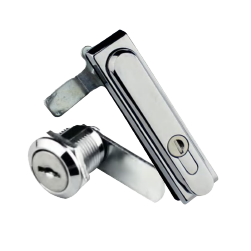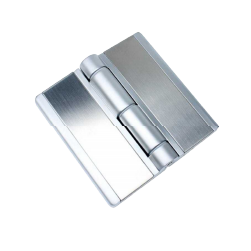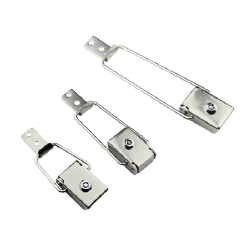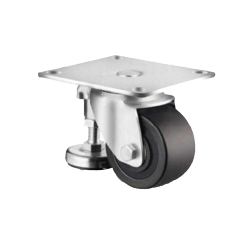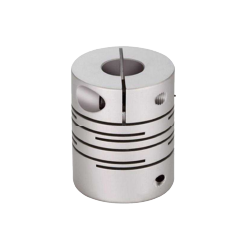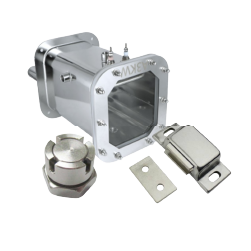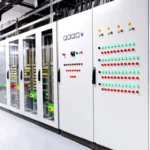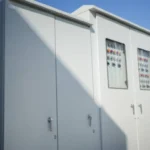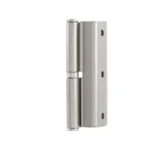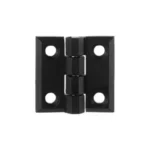Introduction
The cam lock is one of the most common and yet most essential components in the landscape of industrial hardware and security solutions. These devices are used to secure a building’s power grid in the electrical cabinet to a simple locker holding personal effects, and they are all vital and reliable access controls. They are an ideal combination of minimalist design and functionality.
This guide is a complete resource on the cam lock, which offers an in-depth analysis of its mechanics, parts, various types, and essential uses. It will provide engineers, designers and facility managers with the knowledge needed to make the right choice of locking solution for any particular task.
What Is a Cam Lock?
A cam lock is a fastener used to fasten a door, pane, or drawer to a frame or housing. It is characterized by its simplicity and effectiveness in design. The mechanism is a cylindrical lock body that is fitted into a hole in the panel to be secured. On the back of this lock body is a straight or offset lever known as a cam. When the lock is opened, usually with a key, this cam turns behind the fixed frame, effectively preventing the panel from being opened. It is mainly used to offer a low-to-medium security in a compact, easy-to-install form factor, which makes it an industry standard in enclosures of any type.
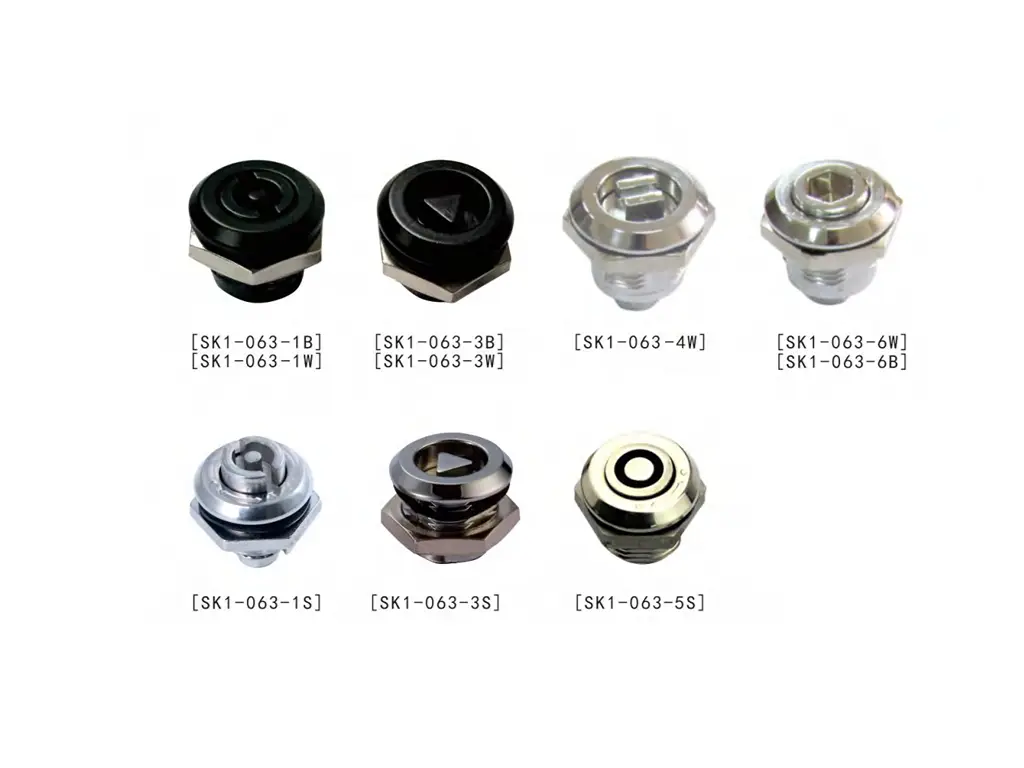
How Does a Cam Lock Actually Work?
The operational principle of a cam lock is a straightforward example of mechanical leverage. The whole procedure depends on the transformation of rotational motion into a safe, linear block.
The operation sequence starts with the insertion of the right key into the keyway of the lock. The biting of the key is such that it positions the internal tumblers, small pins or wafers, within the lock cylinder to a given shear line. When these tumblers are in the right position, the cylinder can turn freely in its housing.
The cylinder rotates as the user turns the key, usually 90 or 180 degrees. Since the cam is attached to the end of this cylinder, it turns together. This rotational motion moves the cam between an unlocked position, where it is out of the frame, and a locked position. When locked, the cam is seated solidly behind the edge of the frame of the enclosure or a special strike plate. This physical barrier does not allow the door or panel to be pulled open, ensuring a secure closure. To open it, the reverse is done: the key is turned in the opposite direction, drawing back the cam and releasing the panel.
Cam Lock Components: Understanding the Parts
The performance of a cam lock is based on the accurate interaction of its main components. Knowledge of each of the parts is important in order to select and install them appropriately.
The Cam
The latching arm of the lock is called the cam. It is a flat metal, usually steel, which is screwed or clipped to the back of the lock cylinder. The cam is what does the locking when the lock is turned by rotating behind the frame. Cams are not universal; they are made in different lengths and shapes, straight and offset (bent) to fit different distances between the mounting surface of the lock and the frame it must engage. This distance is referred to as the grip range.
The Lock Cylinder
The most important part is the lock cylinder, or plug, which holds the keyway and the internal tumblers of the locking mechanism. This is the section of the lock that a user comes into direct contact with through the key. The security level of the lock depends on the accuracy of the internal mechanisms of the cylinder. It is the one that distinguishes between the right key and wrong keys and only authorized access is provided.
The Nut
The nut is the main fastener that secures the whole camlock assembly to the door or panel. The housing of the lock is threaded so that the nut can be screwed onto the back of the panel. This move locks the lock in place. The most common are a standard hex nut, tightened with a wrench, or a spring clip, which can be installed faster and without tools in some different applications.
The Key
The most important thing is the external device that is needed to work the lock. Its specific-cut profile is such that it aligns the tumblers in the cylinder. Cam lock keys are available in a variety of forms, most often flat, two-bit keys or more secure tubular keys. The design of the key is directly proportional to the resistance of the lock to picking and unauthorized duplication because of its complexity and uniqueness.
The Housing
The housing is the outer shell of the cam lock. It covers the lock cylinder and all the internal mechanisms, shielding them against external manipulation and the elements. The housing has an exterior thread to receive the mounting nut and a head that is on the outside of the panel. The housing head may be of various shapes and sizes and it gives a stop to prevent the lock from being pushed through the mounting hole.
Cam Lock vs. Cam Latch: What’s the Difference?
Although the terms are used interchangeably in everyday language, ”cam lock” and ”cam latch” are two different hardware elements with different functions. The main distinction is in the means of actuation and the degree of security.
A cam lock is a security device. It needs a key to work. The internal pin or wafer tumbler system makes it such that only a person with the right matching key can open the lock. This qualifies it to be used in applications where access control is a priority, like in electrical enclosures, server racks, and medical cabinets.
A camlatch, also known as a quarter-turn latch, is a fastening device. It does not usually provide key-based security. Rather, it is driven by a simple tool (such as a slotted or square drive) or a hand-operable knob or wing handle. It is used to keep a panel closed, and may provide compression to seal against a gasket, but it does not prevent unauthorized access. It is applied where fast and frequent access is required and security is not an issue.
Types of Cam Locks Explained
Cam locks are categorized based on several key characteristics, including their mechanism, keying system, and material. Selecting the right type is critical for matching the lock to its intended application. Understanding the different types of cam locks helps in making informed decisions.
| Category | Types | Security Level | Advantages | Disadvantages | Cost |
| Lock Mechanism | Flat Key | Medium | Widely used, low cost | Vulnerable to picking | $ |
| Tubular | High | High resistance to picking, compact | Difficult to duplicate keys, pricier | $$ | |
| T-Handle | Medium to High | Easy to operate, ideal for large panels | Bulky, requires more space | $$$$$ | |
| Combination | Medium | Keyless, good for shared access | Codes can be observed or forgotten | $$ | |
| Keying System | Keyed Alike (KA) | Low | Convenient for multi-lock access | One lost key compromises all locks | $ |
| Keyed Different (KD) | High | Unique keys for each lock, high security | Complex key management | $$$$$ | |
| Master Keyed (MK) | Medium to High | Hierarchical access with master control | Requires planning, more expensive | $$ | |
| Material | Zinc Alloy | Basic | Low cost, easy to produce | Poor corrosion resistance | $ |
| Stainless Steel | High | Excellent durability, corrosion resistant | Expensive, harder to machine | $$$ | |
| Brass | Medium to High | Rust-proof, non-sparking | Softer, less impact-resistant | $$ | |
| Security Rating | Standard | Low to Medium | Simple structure, cost-effective | Easily picked or forced | $ |
| High-Security | High | Drill/pick-resistant, secure | Expensive, more complex installation | $$$ | |
| Special Types | Electronic Lock | High | Supports keypad/RFID/audit trails | Requires power, higher install effort | $$$ |
| Smart Cam Lock | High | Remote control via app, real-time access | Most expensive, relies on connectivity | $$$$ |
By Locking Mechanism
The physical design of the lock and key defines its operational category.
Flat Key Cam Lock
This is the most common and traditional form of cam lock. It is based on a pin tumbler or wafer tumbler mechanism and is opened with a standard flat key, like those used on residential doors. They are reasonably secure and cost-effective, and can be used in a huge variety of general-purpose applications, including office furniture and basic access panels.
Tubular Cam Lock
A tubular cam lock is more secure than a regular flat key lock. It is worked by a cylindrical hollow-ended key. The locking mechanism is made up of several pins that are placed in a circular manner around the cylinder. This design is also more resistant to lock-picking tools and methods, and is thus a popular design in applications where security is a priority, e.g., in vending machines, coin-operated laundry, and alarm system panels.
T-Handle Cam Lock
The T-handle cam lock is characterized by the ergonomic T-shaped handle that is used instead of the standard key. Some versions are non-locking, but many have a key lock in the middle of the handle. The T-handle has more leverage, so it is easier to use larger or heavier doors or panels that can have a compression seal. They are typically used on industrial enclosures, truck tool boxes and generator housings.
Combination Cam Lock
A combination cam lock does not require keys at all; instead, a combination of numbers is entered on a series of rotating dials. They are suitable in multi-user settings such as gyms, schools, and offices where keys would be impractical to issue and manage. They are available in user-resettable models and in fixed, pre-set code models.
Based on Keying System
The keying system determines how keys and locks in a series are related.
Keyed Alike (KA) Cam Lock
A Keyed Alike system is one where all the locks in a particular set can be opened using the same key. This is very convenient in applications where one user must access multiple locked enclosures, as in a series of maintenance panels or a fleet of vehicles. The trade-off is that it is less secure because one key can open all locks.
Keyed Different (KD) Cam Lock
The standard of security is Keyed Different. Every lock within a KD system has a unique key and that key will only work on that particular lock. This is the standard option in applications where personal security is most important, e.g., personal lockers, cash boxes, and personal file cabinets. It is the most secure and needs proper key management.
Master Keyed (MK) Cam Lock
A Master Keyed system is a combination of KA and KD systems. In an MK system, the locks are keyed differently, and each lock has its own operating key. Nonetheless, one, distinct master key is produced that can override and open all locks in the specified group. Such hierarchical access control is necessary in institutional and commercial environments such as hospitals, hotels, and large office buildings, where supervisory staff need emergency or administrative access.
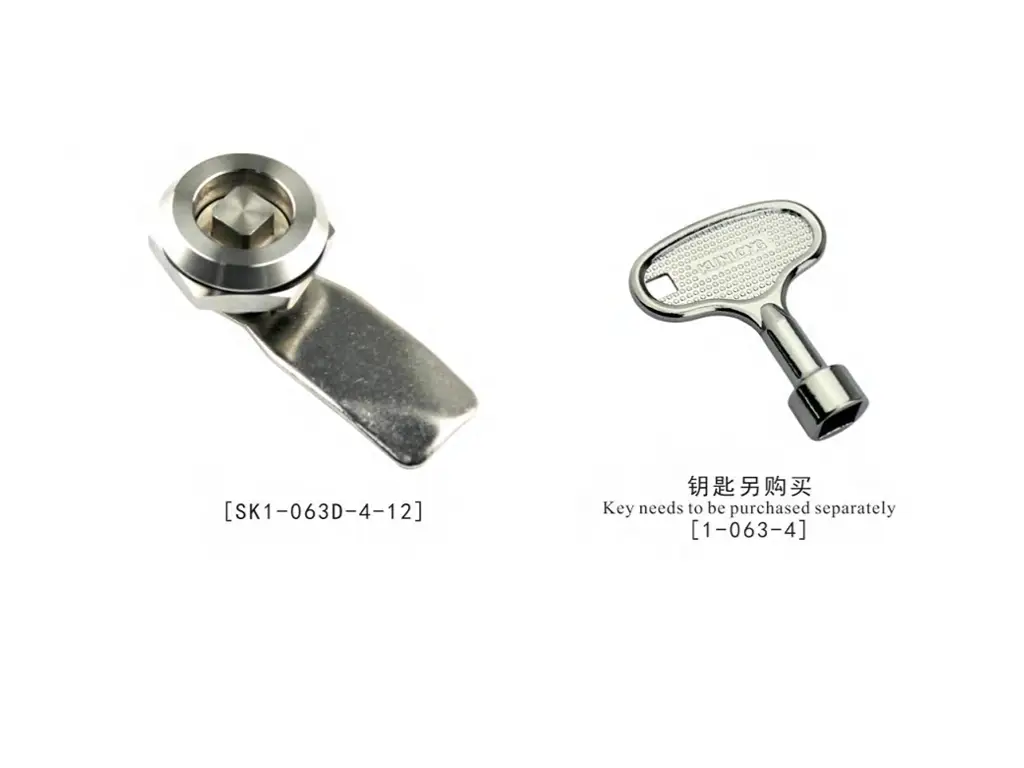
Based on Material
The material of a cam lock dictates its durability, corrosion resistance, and suitability for different environments.
Zinc Alloy Cam Lock
The most widely used material in the production of cam locks is zinc alloy because it has a good combination of strength, castability, and cost. It can be easily completed by chrome plating, black powder coating or other finishing. It is durable but should only be used in indoor or sheltered areas because it is less corrosion resistant than stainless steel or brass.
Stainless Steel Cam Lock
In applications that are harsh or corrosive, stainless steel is a better material. It is extremely strong and has natural resistance to rust and corrosion, which makes it suitable in marine equipment, outdoor enclosures, food processing machinery, and chemical plants. It resists frequent wash-downs and exposure to moisture.
Brass Cam Lock
Brass is also a corrosion-resistant material that is very durable. It is a little less hard than steel, but it has a natural resistance to tarnishing. Brass is frequently selected because of its appearance and is frequently utilized in decorative furniture, marine applications, and areas where sparking is a concern.
By Security Level
The internal design of the lock determines its resistance to tampering.
Standard Cam Lock
A typical standard cam lock has a simple pin or wafer tumbler mechanism with only a few key variations. It offers a basic level of security that can be used to prevent casual, opportunistic access. These are applicable in low-risk applications such as office supply cabinets, small access panels, and utility drawers.
High-Security Cam Lock
High-security cam locks are designed to be resistant to concerted efforts. Such characteristics may consist of hardened steel anti-drill pins on the front of the lock cylinder to deflect drill bits, complicated keyways that prevent picking tools, and sophisticated locking mechanisms such as disc-detainer systems or tubular locks. They are defined to be used in applications where assets are valuable or security is paramount, including cash management systems, pharmaceutical cabinets and secure data enclosures.
Special Types
Technology has introduced advanced variations of the traditional cam lock.
Electronic Cam Lock
Electronic cam locks substitute the mechanical key with an electronic input mode. It is accessed through a keypad, an RFID card or fob, or a biometric scanner. These locks have more sophisticated features like audit trails to record access events, time-based access control, and connection to larger building security systems.
Smart Cam Lock
Smart cam locks are a subset of electronic locks, and they include connectivity, usually through Bluetooth or Wi-Fi. This enables them to be controlled, tracked and managed remotely through a smart phone app. Administrators can enable or disable access in real-time, monitor lock status remotely, and be notified in real-time, which makes them suitable to use in modern data centers, remote equipment shelters, and smart locker systems.
Common Industry Applications of Cam Locks
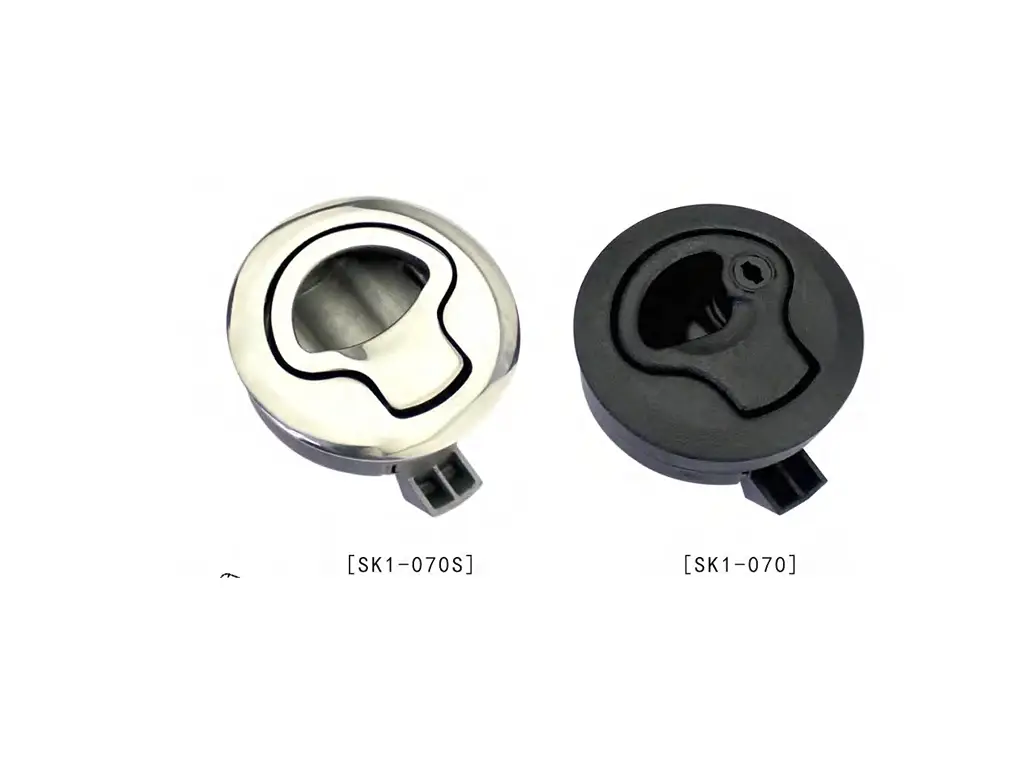
Cam locks are versatile and thus a common part of many industries. They are found in different applications requiring various levels of security.
Electrical Enclosures and Cabinets
Electrical control panels, junction boxes, and distribution cabinets have standard cam locks to secure the doors. They keep out unwanted access to sensitive electrical parts, which is safe and secure in operation.
HVAC Systems
Cam locks are applied on access panels in heating, ventilation and air conditioning systems. This enables the service technicians to easily access the internal components to service them and keep the panels firmly fastened during operation to ensure airflow and avoid accidents.
Data Centers and Server Racks
Data centers are all about security. The front and rear doors of server racks are secured with keyed and electronic cam locks that prevent physical tampering and unauthorized access to critical IT infrastructure.
Equipment Covers
Protective covers or service panels on many kinds of industrial and commercial equipment are fastened with cam locks. This will make sure that the covers are in place when the machine is in use, but can be easily taken off by authorized personnel to service the machine.
Industrial Equipment
Cam locks are applied in manufacturing machinery, power generators, access doors, tool compartments, control panel covers, safety guards and storage compartments. They are well built to withstand industrial conditions.
RVs and transportation
Cam locks are applied on storage bay doors, glove compartments, and utility panels in vehicles such as trucks, buses, boats and recreational vehicles (RVs). They offer secure fastening that can resist the vibration and movement of travel.
Medical and Automation Equipment
Medical carts, diagnostic equipment, laboratory equipment and automated laboratory machinery are secured with cam locks. Such applications are frequently made in materials such as stainless steel to satisfy high hygiene standards.
How to Select the Right Cam Lock
The selection of the right cam lock is a technical choice that needs to be measured and taken into consideration with regard to the specific needs of the application.
Measure Panel Thickness
The initial step is to take the measurement of the thickness of the door or panel on which the lock is to be fitted. The length of the cylinder of the lock should be long enough to go through this panel and enable the securing nut to be fitted.
Determine the Grip Range
Grip range is the distance between the inside face of the panel and the engagement surface of the frame. To overcome this distance, you need to choose a cam with the right length and offset (if any) to reach the frame and lock into it.
Select the Correct Cam Style and Offset
Cams are either flat or offset and the selection of the correct cam is based on the measurement of your grip range. A flat cam is used when the locking surface is even with the interior of the door. In case the locking surface is recessed or raised, an offset cam with the proper bend is required to fill the gap and provide a proper engagement. The wrong choice of cam may lead to functional problems; a short cam will not latch, and a long one will not hold the panel in place.
Consider Material and Finish
Choose a material and finish depending on the operating environment. In dry, indoor use, a standard zinc alloy, chrome plated, is adequate. In outdoor, marine, or corrosive conditions, stainless steel or brass is required to avoid degradation.
Match Security Level to Your Application
Evaluate the security risk. A typical cam lock will suffice in a low-risk utility closet. A high-security, pick-resistant tubular or electronic lock is more suitable for a cash box or a server rack with sensitive data.
Select a Trusted Cam Lock Manufacturer or Supplier
Your final selection is only as good as the quality of the component. Find a manufacturer with a reputation for quality, rigorous testing, and stable supply chains. A reliable supplier will be able to offer technical assistance and make sure that the parts you get are according to your specifications each and every time.
How KUNLONG Becomes Your Trusted Partner?
At KUNLONG, we understand that choosing a hardware supplier is just as important as choosing the right hardware itself. Our reputation as a trusted partner stems from our unwavering commitment to quality, innovation, and customer satisfaction.
We proudly serve 12 industries and have delivered over 700 customized solutions, supported by 108 patents and key certifications like ISO9001, ROHS, CE, and CQC. This ensures that every product we provide meets the highest industry standards.
Our manufacturing process is built on excellence. We use SGS-certified materials and maintain rigorous quality control—every batch undergoes 15 inspections, with precision tolerances up to 0.0005mm. This guarantees that our cam locks are not only reliable but also durable, even under the toughest conditions.
We recognize that no two projects are the same, which is why we offer an extensive range of cam locks with various types and materials. For unique requirements, comprising 30 engineers with an average of 10 years’ experience, delivers expert OEM/ODM customization. We aren’t just a supplier; we are a dedicated partner, focused on delivering the perfect solution for your project.
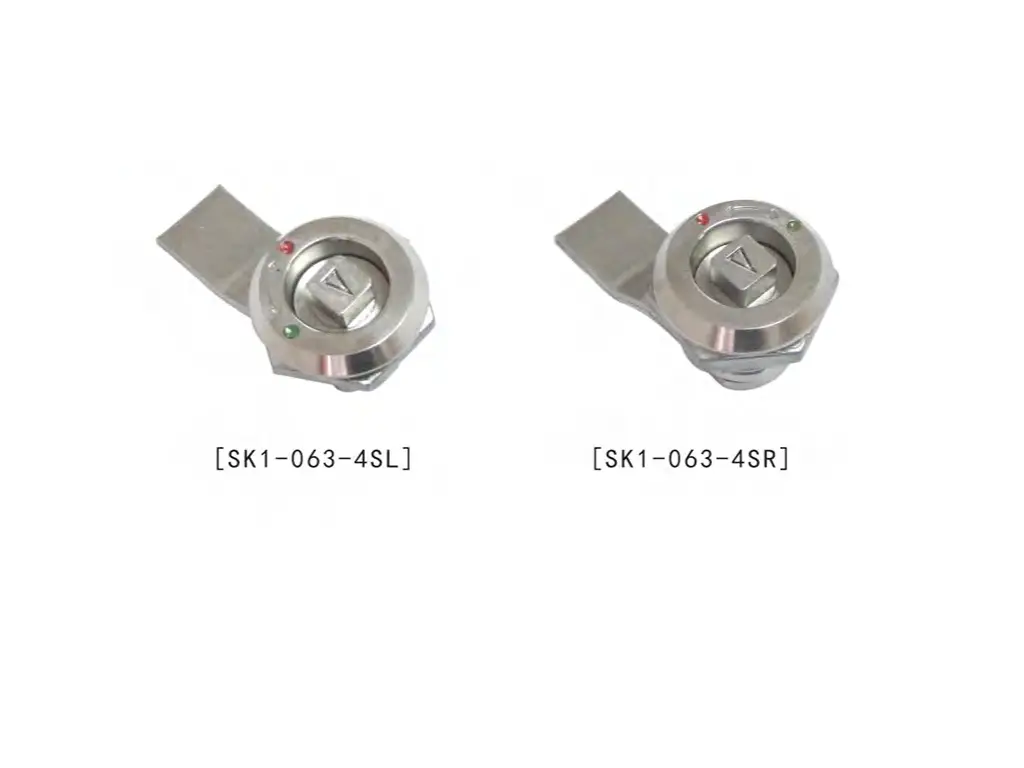
Cam Lock Installation and Maintenance Tips
Proper installation and routine maintenance are key to maximizing the lifespan and performance of any cam lock.
For installation, ensure the mounting hole is drilled to the correct diameter to prevent the lock from spinning or fitting loosely. When tightening the mounting nut, secure it firmly but avoid over-torquing, which can damage the lock’s threads or the panel itself. Confirm that the cam is properly oriented and has full, unobstructed engagement with the frame.
For maintenance, periodically clean the lock’s exterior and keyway of dust and debris. If the lock becomes stiff, apply a small amount of a dry lubricant, such as powdered graphite. Avoid using oil-based lubricants like WD-40, as they can attract dirt and gum up the internal tumblers over time. Regularly check the lock for signs of wear, damage, or looseness and replace it if its integrity is compromised.
Final Thoughts
The cam lock, in all its variations, is a testament to effective engineering. Its simple principle, robust construction, and immense adaptability have made it an indispensable component in countless industries worldwide. From providing basic fastening to delivering high-level, intelligent access control, its role is foundational to security and operational integrity. A thorough understanding of its types, materials, and key functionalities is not merely academic; it is a practical necessity for anyone tasked with designing, building, or maintaining secure enclosures. By carefully evaluating the needs of the application, you can confidently select a cam lock that will provide reliable performance for years to come. Interested in exploring more about industrial locks? Visit https://www.kunlonghardware.com/industrial-locks-guide/

